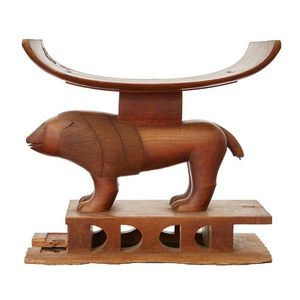French Art Deco Open-Sided Table on Stepped Base (A/F)
You must be a subscriber, and be logged in to view price and dealer details.
Subscribe Now to view actual auction price for this item
When you subscribe, you have the option of setting the currency in which to display prices to $Au, $US, $NZ or Stg.
- A/f, as Inspected - The letters "A/F" or "as inspected" as part of a description is the cataloguer's shorthand for "all faults" or "as found", meaning the item has some type of damage or deficiency, it is of uncertain date or provenance, and/or that the seller takes no responsibility for the completeness of the item or the accuracy of the description.
- Art Deco Period - The Art Deco period was a cultural movement that emerged in the 1920s and 1930s, and was characterized by its emphasis on modernism, luxury, and elegance. The name "Art Deco" comes from the Exposition Internationale des Arts Décoratifs et Industriels Modernes, a large exhibition held in Paris in 1925 that showcased the latest trends in decorative arts.
Art Deco was a reaction against the ornate and elaborate styles of the previous era, and reflected a new modern sensibility. It was characterized by streamlined, geometric shapes, bright colours, and the use of new materials such as chrome, glass, and Bakelite. Art Deco designers sought to create a sense of luxury and sophistication, often incorporating expensive materials such as ivory, marble, and rare woods.
Art Deco had a significant impact on a wide range of artistic fields, including architecture, fashion, graphic design, and interior design. Some of the most iconic examples of Art Deco architecture include the Empire State Building in New York City, the Hoover Building in London, and the Palais de Chaillot in Paris.
The Art Deco period came to an end in the 1940s, as World War II and changing cultural trends led to a shift in artistic styles. However, Art Deco remains an important influence on design and art, and continues to be celebrated for its modernist sensibility and glamorous aesthetic.
This item has been included into following indexes:
Visually similar items

An Art Deco burr walnut and macassar ebony centre table the rectangular walnut top above a full-length bowed support, raised on a macassar ebony veneered plinth base, 213.5 x 75. X 106.5 cm

A chiefly stool, Fanti Tribe, Ghana, West Africa, early 20th century, made for chiefly use, the base of the seat of the stool carved in the form of a standing male lion, an animal of great power and majesty, the curved seat with native repair and a worn pa

A fine Regency cut brass inlay card table, circa 1810. The rounded rectangular swivel top crossbanded and inlaid with rosette, anthemion and arabesque designed cut brass, enclosing a baise lined interior, the apron with brass line inlay and central freeze,

A Garth Chester bent plywood Curvesse chair. Height 77 cm. Width 60.5 cm.
